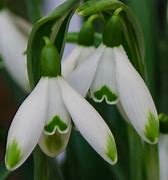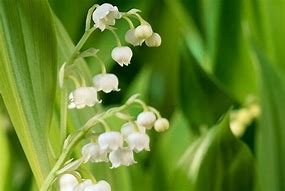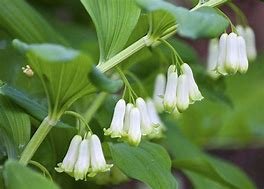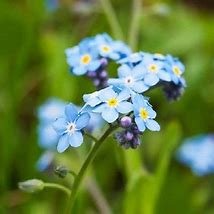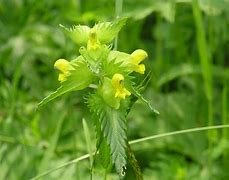
List of Flowers
Flowers/bulbs can be sown or planted on each individual grave at Woodbrook.
While compiling this list we have limited our selection to native Irish species which are to be found in old Irish woodlands. We have also taken into consideration the importance of attracting pollinators while avoiding excessively invasive species which could lead to maintenance problems in the future.
We will add more to this list in the coming months, if you have a specific question about any flower please contact us and we will advise – your research can also be very useful to us so please share it to colin@greencoffins.ie
Bluebell (Hyacinthoides non-scripta) Native Irish species only please
Probably the most beautiful and most anticipated arrival from April onwards in any woodland each year.
They spread a beautiful carpet of blue colour in shaded areas under the trees. The native Irish bluebell is known as the “English” bluebell – please avoid the Spanish bluebell (Hyacinthoides hispanica) when planting.
Snowdrops (Galanthus Nivalis)
One of the first and most beautiful flowers to pop up in the woodlands each year in January and February.
They prefer to grow in shady areas (perfect for under sowing at Woodbrook) under broadleaf trees where the leaves fall of in the summer. They brighten the often colourless woodland floor at the most dreary time of the year.
Wood Anemone (Anemonoides Nemorosa)
The wood anemone is one of our most beautiful woodland flowers. The small white flowers are very visible on the avenue under the chestnut trees at Woodbrook NBG in early spring. It is a perennial herbaceous plant growing 5-15 cm tall. In Irish it is called Lus na gaoithe (plant of the wind) a reference to the way the flexible flower stem allows the flower to bend in the wind. Traditional coppice woodland management really helps this little flower to flourish. The planting period for bulbs is from September to November.
Lily Of the Valley (Convallaria Majalis)
Again a beautiful scented little white flowering plant ideal for under sowing. A herbaceous perennial it spreads to form extensive colonies in woodland areas. Flowers in May.
Primrose (Primula Vulgaris)
One of our favourites at Woodbrook with its beautiful pale yellow flower. The common primrose appears in the grounds in early spring. Ideal for undersowing. Widely available as young plants. The name in Latin translates as “first rose”.
Ferns
There are lots of different varieties of ferns available – each one having a place in our woodland. Ferns just love our damp Irish weather and the shade provided by the trees.
Foxgloves (Digitalis Purpurea) Lus mór
Foxgloves are one of our most beautiful indigenous plants. They are nectar-rich and are particularly attractive to insects and rely on bees for pollination. Often prominent in hedgerows and woodlands it reacts well in coppice areas. We are lucky to have some white-flowered foxgloves at Woodbrook which were often used for medical purposes. If considering planting please avoid hybrid species. Widely available in seed or plug plants – flowering from June to August.
Red Campion (Silene Dioica) Coireán Coilleach
As the Irish name suggests this is another beautiful woodland flower – ideal for under sowing. Flowers from April/ May until September often just as the bluebells are finishing off. Loved by pollinators in the past this perennial flower was often worn as a buttonhole by young unmarried men. Sow seed from March to October.
Wood Sage (Teucrium Scorodonia) Lúr Sleiibhe
This perennial native herb produces yellow flowers from July to September and can grow to 12-24 inches in height. Also known as woodland germander. They are highly attractive to pollinating insects.
Solomons Seal (Polygonatum Multiflorum)
A welcome addition to the woodland with its dangling white blossoms in spring and early summer. Provides nectar, pollen, berries and shelter for wildlife.
Flowers that are more suited to the grassy areas of the burial ground
Oxeye Daisy (Leucanthemum Vulgare)
The Irish name for Oxeye daisy is ‘NóinIn mór’ which means ‘big daisy’ and that really does describe this beautiful flower. Strong erect large flowers (up to 80cm stems) allow these flowers to compete with grasses in a meadow. They are hardy perennial and will self-seed. Sow seeds from February to July with flowers from June to September. Ideal for the areas of the graveyard with fewer trees.
Cornflower (Centaurea Cyanus)
This bright blue annual flowering plant often grew as a weed in cornfields. Due to the over-use of herbicides, it is now endangered. Can be seen in the grass meadow at Woodbrook in the areas with fewer trees. Very good at attracting bees and butterflies and other pollinating and beneficial insects. Sow seeds from March to May – flowers from June to September.
Harebell (Campanula Rotundifolia)
Found throughout Ireland in dry grasslands – so again more suited to areas in the burial ground where there are fewer trees. Sow from May to June – with flowering from June to September. Often called the bluebell of Scotland where it colonises grasslands and open areas – or as the name suggests in areas you would expect to have hare visitors.
Field forget-me-not (Myosotis Arvensis)
The Irish name is Lus míonla goirt. The flower is regarded as one of the prettiest if not smallest at 5mm in diameter. This annual or biennial grows to about 35cm and it flowers from May to October. The bees also love this flower. Again more suited to areas with fewer trees – the edges of the burial ground. Sow seed from Aptil – June with flowers from May – June.
Cowslips (Primula Veris)
Bainne Bó Bleachtáin in Irish. Noticeably absent for some time, is now making a comeback. The yellow-orange flower frows to about 8-15mm in height, nodding to one side. This flower blooms in the early summer months, in April and May.
Yellow Rattle (Rhinanthus Minor)
The Irish name for the yellow rattle is gliográn. The flowers reach a height between 10-30cm. Yellow rattle is a parasitic flower that attaches itself to the roots of grasses, reducing the ability of the grasses to grow large and take over a meadow, thus creating room for other wildflowers to grow. A favourite for any farmer looking to grow a wild meadow surrounded by agricultural land.




